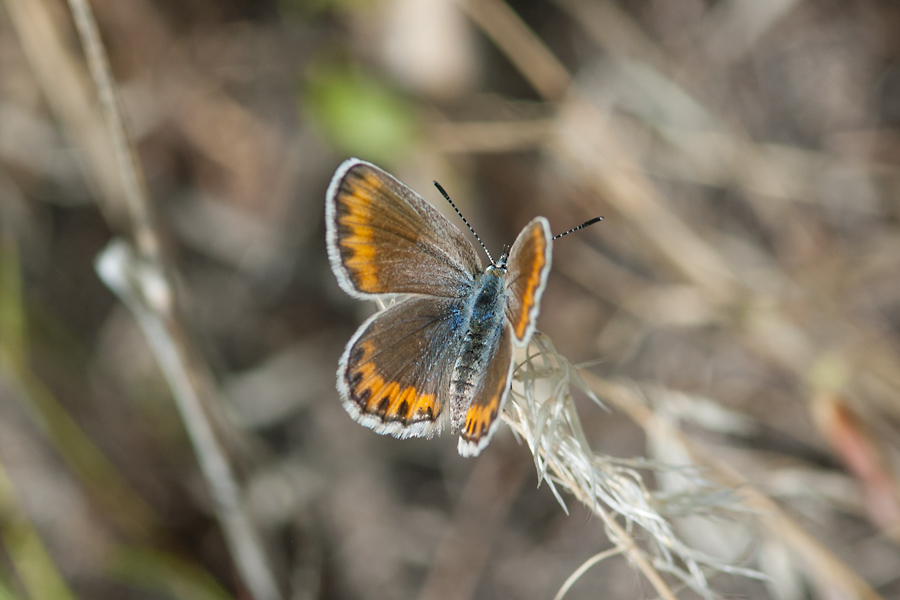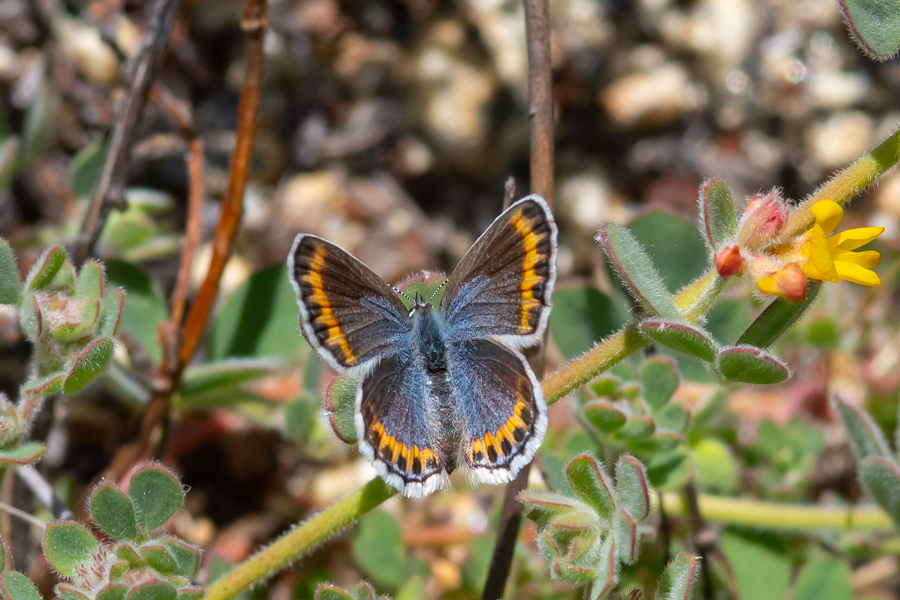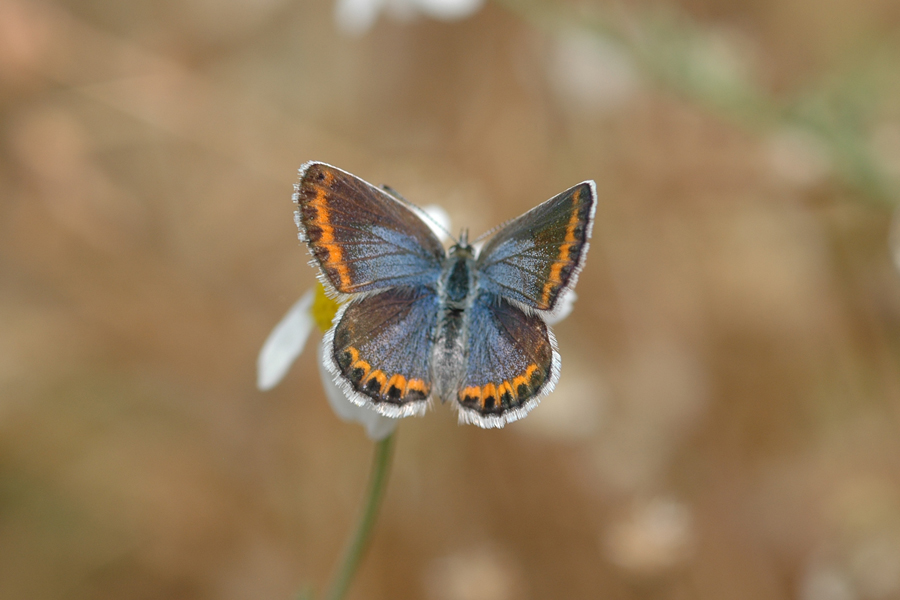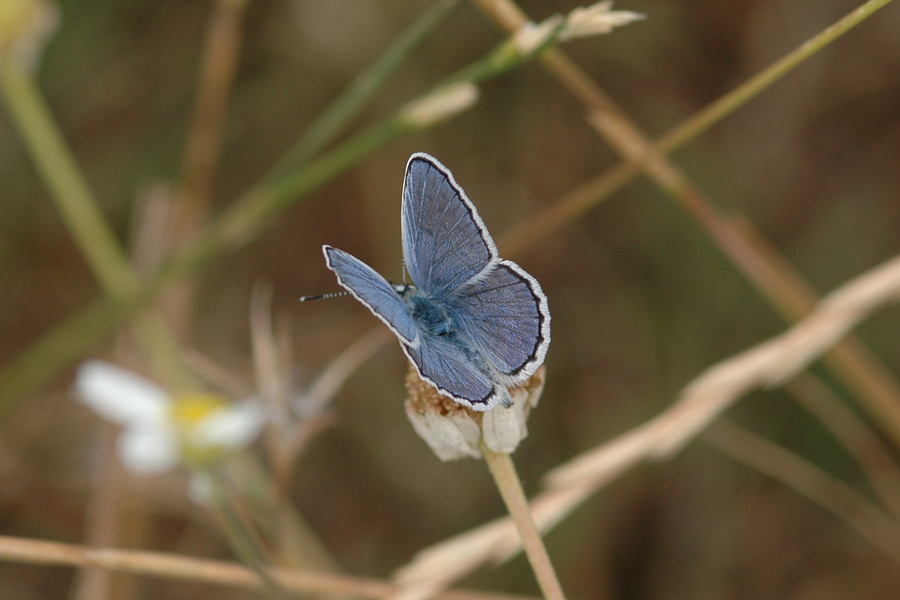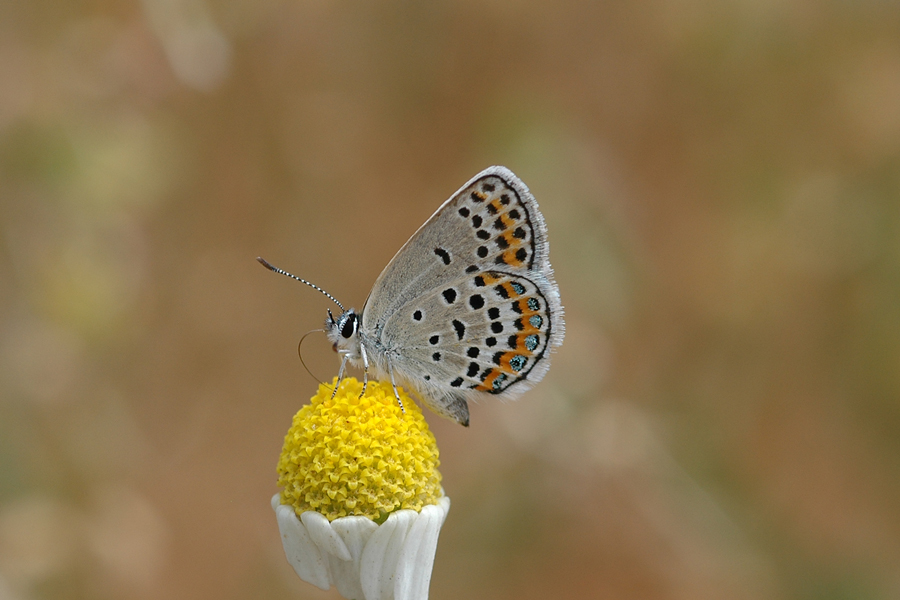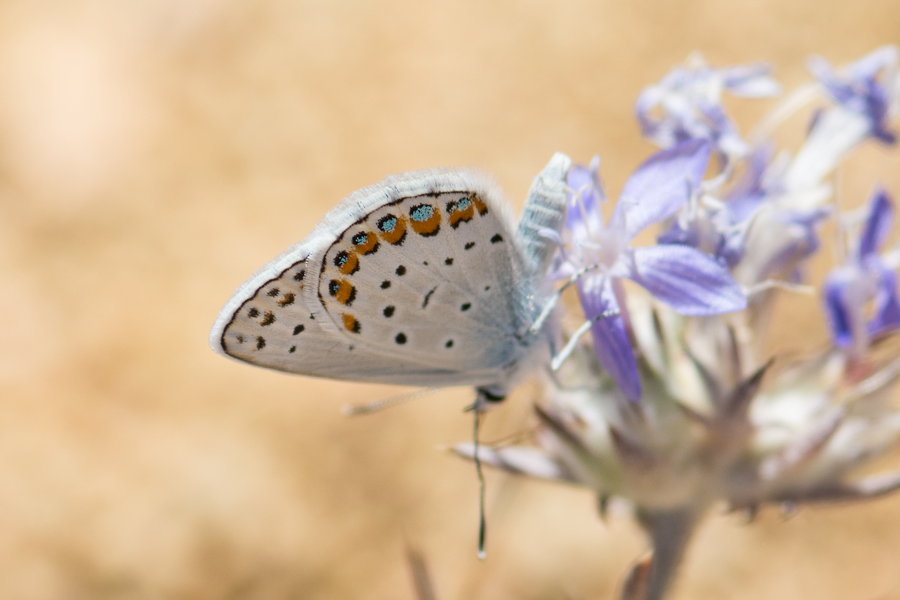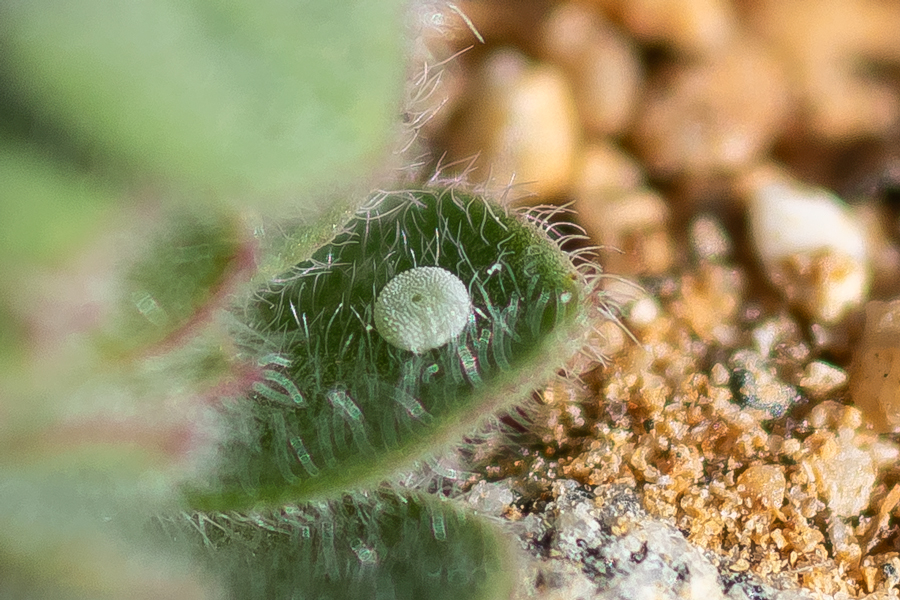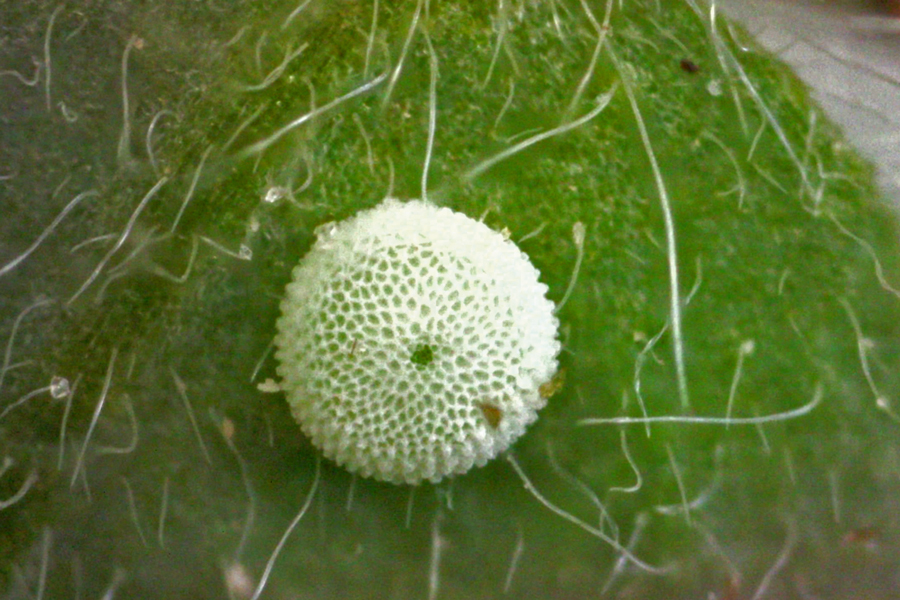Plebejus melissa paradoxa
Melissa Blue
What makes this blue unique in southern California is the extent of the orange auroras, especially the females, which have them on both sides of the forewings and the hindwings. Males are a beautiful blue on the dorsal side without an aurora, but on the venter the orange runs along both wings. Both sexes have ventral hind wing maculation with light blue metallic spots set off by orange and outlined in black, really visually pleasing in fresh individuals. Females usually have a brown dorsal ground color with hints of blue at the base of the wings and on the body, but some females have extensive blue, a great combination with the bold orange auroras. The frequency of blue females seems to vary from population to population. When fresh, this species rivals the Sonoran blue for most spectacular blue in our region.
Melissa blues are multiple brooded, and while they use lupines up north (e.g. parts of Kern Co.), I mostly see them using Acmispon species, such as americanus (e.g. at Lake Cuyamaca), tomentosus (Lake Hemet), decumbens (Keen Camp Summit) and strigosus (Whiskey Flat near Kernville). They can be locally common, with reliable spots including Trout Pond Trailhead near Lake Cuyamaca, and the shoreline at Lake Hemet. The type locality is the "Tehachapi Mountains," and I have seen them along the PCT at Oak Creek.
